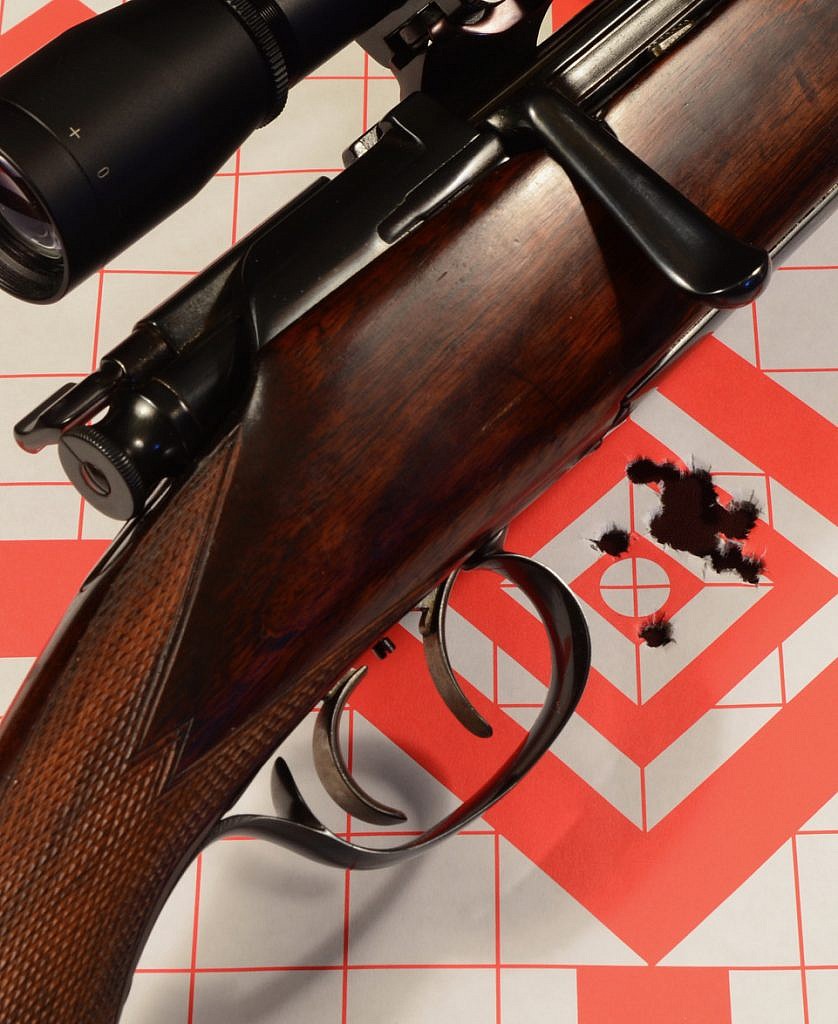
by Terry Wieland
Anyone who has done any precision shooting at all, from a 1,000-yard rifle match to knocking tin cans off a fence with a pistol, is well aware of the importance of trigger pull. In fact, one could go so far as to say that without a fine, crisp, delicate trigger pull, there is no such thing as precise shooting.
The problem is, if a trigger is made sufficiently light for an accurate let-off, it might be too light for safety. What to do? Well, somewhere in the distant mists of time — and we know it was hundreds of years ago — a gunmaker arrived at the idea of a second trigger that would “set” the first one. The first, or primary trigger, released the hammer, and could be pulled normally with, say, an eight- or nine-pound pull. By setting it with the second trigger, the sear was moved slightly, reducing the pull to but a hair — hence, the “hair” trigger.
That explanation does not even begin to scratch the surface of what actually happens in a set-trigger mechanism, and does not even explain the action very well. Modern set triggers, by which I mean those made in the last 150 years, have complex and delicate mechanisms consisting of springs and levers that would mystify Rube Goldberg.
Not surprisingly, the Germans made the art of the set trigger into a craft entirely separate from the mainstream of gunmaking. The Stechermachermeister was a craftsman of almost mystical skill. Larger companies ordered triggers for high-end rifles from these craftsmen, much the way the London gunmakers bought their locks from Brazier or Chilton.

Set triggers were not restricted to target rifles and pistols in Germany and Austria; hunting rifles were routinely fitted with them, and hunters used them as a matter of course. Probably the most common such rifles seen today are the Mannlicher-Schönauers from Austria, but you also find set triggers on Mausers, and rifles from the great Czech riflemaker, Brno (CZ.)
In the United States, set triggers were normally restricted to target rifles, and in England they were hardly seen at all.
Most Mausers imported to the U.S. had single triggers, because that’s what Americans expected, but Stoeger — for many years the Mannlicher importer — brought in Mannlichers with double-set triggers routinely right through the 1960s. Those who bought them, tried them, and became accustomed to them, swore by them. It’s remarkable how much it can improve your shooting once you get the hang of it.
Conversely, it can ruin you for anything else. After using a set trigger for a couple of sessions, you automatically feel for it and miss it when it’s not there. And even the lightest of your conventional triggers will feel impossibly heavy for a while after.
Mannlicher triggers have a tiny screw between the trigger spurs, allowing the user to set the pull-off weight exactly where he wants it — from barely an ounce up to half a pound. Unfortunately, many you come across have been fiddled with by people who don’t know what they’re doing, and have been “adjusted” to the point where they need a trip to a proper gunmaker to set them right. Equally unfortunately, not many gunsmiths today have the skills to work with set triggers. Lee Shaver (leeshavergunsmithing.com) is one, as are the guys at New England Custom Gun Service (newenglandcustomgun.com).
The most elaborate of all set triggers, not surprisingly, are those made by Germany’s Stechermachermeisters of the late 19th century. They rated triggers according to the number of levers they employed, from two up to seven, with the three-lever trigger standard. A seven-lever trigger was so delicate most shooters could not make use of it, and those who could, would sand their fingertips, like safe-crackers, in order to feel the touch.
In Germany, no craft is so arcane it cannot be turned into high art.
______________________________________________________________________________
Gray’s shooting editor Terry Wieland would love to see if a seven-lever set trigger could be tripped by a feather, or simply by gravity, as legend would have it. There is such a thing as too refined.
